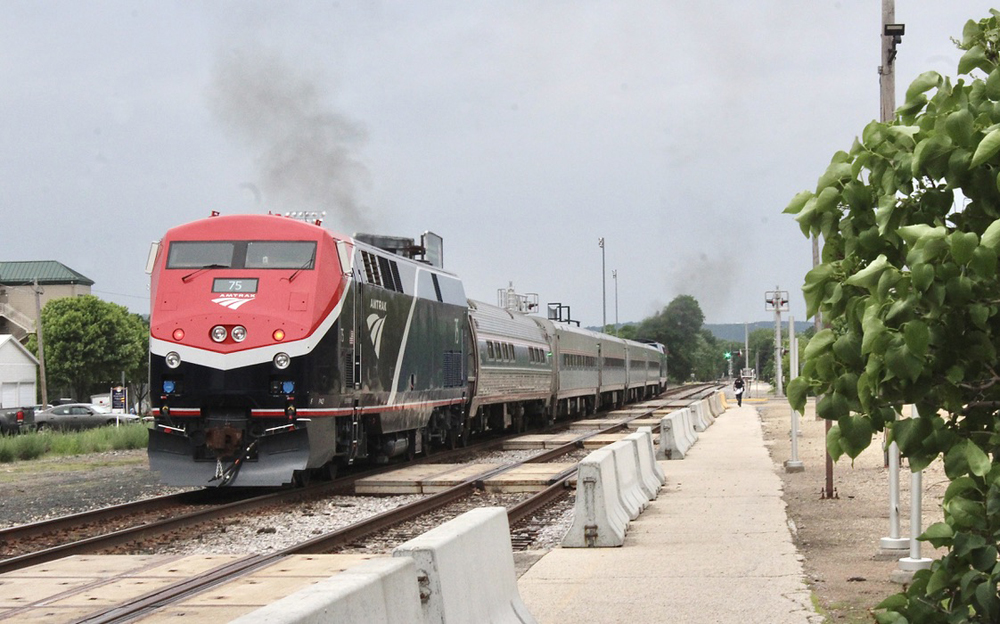
WINONA, Minn. — The first westbound trip of Amtrak’s new Borealis wasn’t flawless. A “technical problem” with a credit card reader delayed the café car’s opening. A pesky lock on the platform wheelchair lift’s enclosure at the Sturtevant, Wis., stop contributed to delay, as did the decision to open only one vestibule trap at downtown Milwaukee to let two Horizon carloads of passengers from Chicago vacate the only remaining seats on the train for the many travelers waiting to board there.
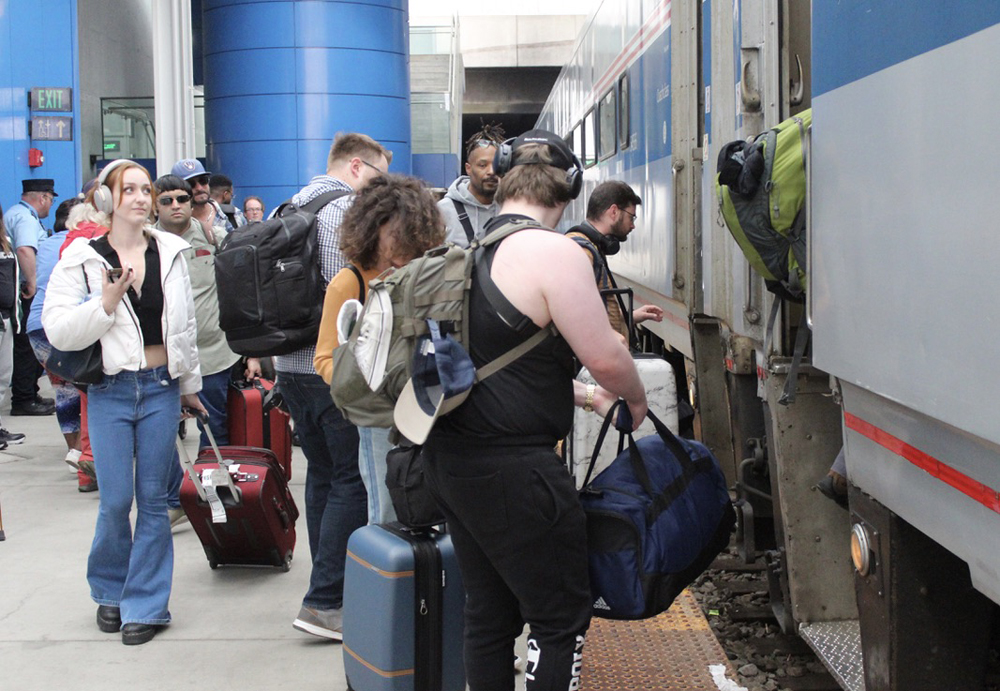
Sure, with all the hoopla the initial run out of the Windy City was a sellout. But consider this: so many people have booked next Monday’s westbound Borealis that the Chicago-St. Paul adult fare is $145, compared to $117 on the Empire Builder, now running with four Superliner coaches. Although that’s a holiday, comparable or only slightly cheaper pricing on preceding days and well into June shows Amtrak’s new entry is a welcome addition to the network.
Clearly, demand for the train exists, even though the schedules for the Borealis and the Builder are only hours apart. And that demand is not just between the end points. A steady stream of passengers detrained or boarded at the many intermediate stops in Wisconsin and Minnesota. One community that will surely benefit is Wisconsin Dells, where summer boat rides and year-round water parks beckon.
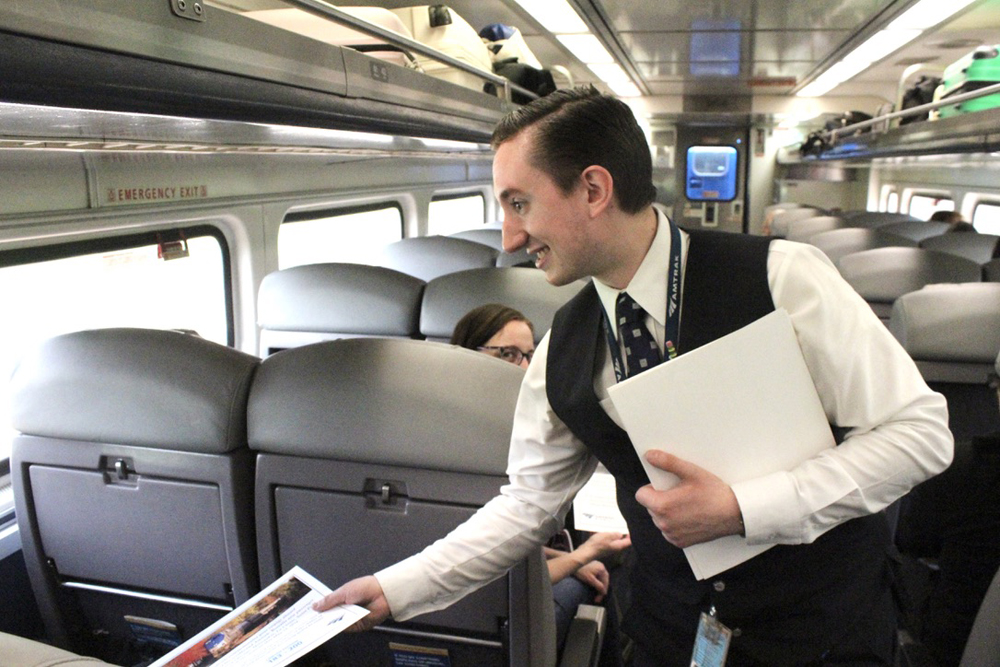
Operationally, the new round trip changes crews at Milwaukee instead of the Empire Builder’s conductor and engineer swap at Winona. The train is assigned four 72-seat Horizon coaches plus an Amfleet I combination business class/café. The food service counter was always busy, though the attendant got help from a supervisor who kept track of food and beverage that would have to be restocked overnight at St. Paul. A thoughtful touch was 200 numbered “inaugural run” certificates passed out by a coach attendant assigned to the first trip. He didn’t have enough.
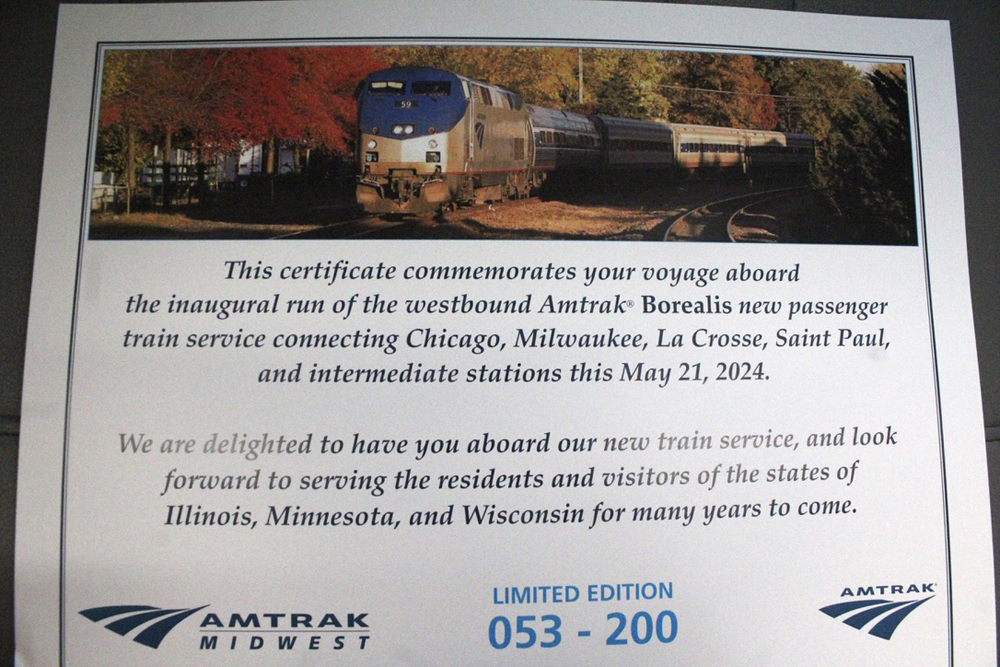
Most of the first-day events featuring public officials and supporters who fought tirelessly to get the train rolling took place beginning at St. Paul on Tuesday’s eastbound run. [see “Amtrak Borealis makes debut,” Trains News Wire, May 21, 2024]. An additional set of ceremonies, also involving the eastbound train, drew Wisconsin Gov. Tony Evers and state Department of Transportation Secretary Craig Thompson, among others, in La Crosse, Wis.
A second Amtrak round trip on this 411-mile corridor is long overdue. Like well-traveled city-pair combinations embedded on other “long-distance only” routes, such as the Texas Eagle’s Dallas-Austin-San Antonio corridor, an additional frequency in each direction automatically increases the probability that departure times will coincide with travel plans.
For most of its 53-year existence, Amtrak actively sought Chicago-Twin Cities business. Until 1979 budget cuts began decimating national connectivity, the North Coast Hiawatha initially complemented the Empire Builder on a schedule quite similar to today’s Borealis.
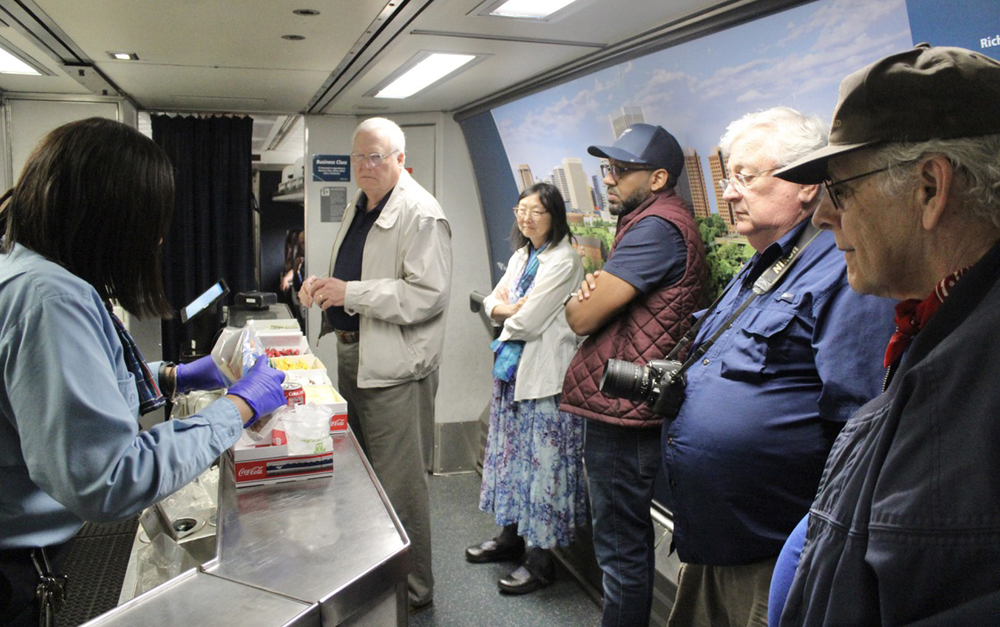
After the overnight North Star was dropped in 1981, the company continued to cultivate the market by adding a Chicago-Twin Cities “cut-off coach” to the Empire Builder during high-demand periods. Made possible because it could be switched at the company’s previous Midway station where other servicing took place, the cutoff car not only preserved coach capacity for passengers traveling beyond St. Paul, but facilitated more affordable pricing for both local and long-distance passengers because they weren’t competing for the same seats.
Amtrak mostly stopped assigning the extra coach after St. Paul Union Depot opened to trains again in 2014, although the Builder still passes through Midway. Capacity was further constricted because until this week, Amtrak dropped a second Seattle-section coach following the COVID-19 pandemic. As a result, the train often sold out on the Chicago-St. Paul segment. Since pricing is driven by availability and the Builder’s Portland section (shown as trains 27/28 on the website) was always assigned two coaches, fares between were invariably higher on the Seattle section.
That dynamic has now changed. To sustain the momentum, the big test will be getting the word out to a traveling public that has seldom been conditioned to “think train” as a possibility. Amtrak Government Affairs vice president Derrick James told a meeting of the Great River Rail Commission earlier this month, “At this time, Minnesota has not chosen to provide us [separate] funding for marketing.” He added that Amtrak’s digital efforts “are of a general nature to drive people to the Amtrak website.”
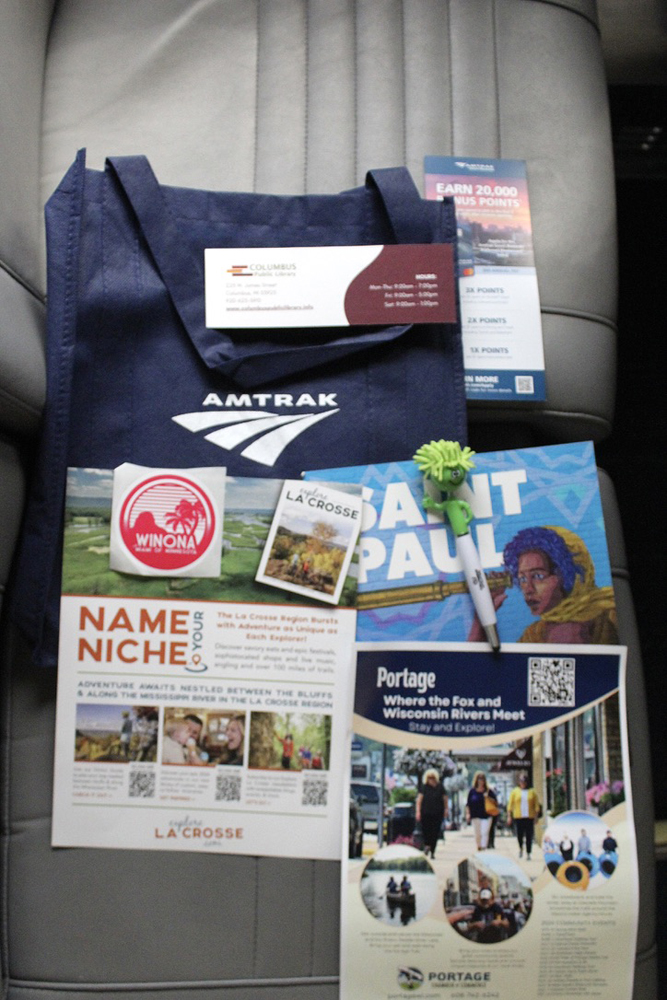
What else can be done to tell people about the new service? How about a route guide with a map? Perhaps it could have in-kind advertising support (to defray layout and printing costs) from businesses between Columbus, Wis., and Red Wing, Minn. who would also distribute it on their property and in their town.
Amtrak and online communities got the ball rolling on the first run by having the coach attendant pass out cloth bags containing brochures, trinkets, and stickers from St. Paul; Columbus, Portage and La Crosse, Wis.; and Winona, “The Miami of Minnesota.”
Can this train serve as a template for future expansion? Not necessarily. Launching Borealis was an easier lift than starting a route from scratch, because stations and route-qualified Amtrak operating crews were already available. It’s also significant CPKC has been a willing host railroad that didn’t require construction of capacity improvements, primarily through Winona, as a condition for more service.
But the Borealis does pose the question: might it be better to add frequencies that would improve utility of an existing route before developing a new one?














And today we learn that 40% of the tickets sold on Borealias could have been served by the existing Hiawatha service ( aka 40% is known to be unneeded ).
Begs the question of how many people are taking Borealias that otherwise would’ve used the Empire Builder.
The key isn’t existing routes and frequencies versus new routes, it’s routes that are reasonably ready for new service. We have to do both to grow ridership and increase the utility of rail travel. We also have to implement service quickly to meet expectations. Prioritization will is key.
With all due respect looking at a one time pricing ain’t “analysis”.
What is the capacity for the train? For other modes?
How many tickets are being sold for trains? For other modes?
Rinse and repeat for costs and revenues.
No. With the recent addition of a second Seattle coach, the Empire Builder is now operating with 11 cars, which is the same as the standard consist a decade ago.
“But the Borealis does pose the question: might it be better to add frequencies that would improve utility of an existing route before developing a new one?”
The answer is: an Emphatic YES!
I’m really surprised this train came on so quickly. Usually, new services take decades and millions of dollars spent on inside-the-Beltway consultants before they can run, if at all. Witness the second NY-Pittsburgh train.
Of course the potential cars are all out of service at Beech Grove with no one to repair them.
This train is an example of improving conventional service rather than proposing new technology in the form of high speed rail. Conventional rail is already in place so the capital expense is rolling stock/ utilization. There is no novel technology that needs to be developed. I hope this continues to be a desired and useful service.
The Empire Builder is two, maybe three, cars shorter than it was a decade ago.
Thanks to CPKC for its cooperation, even though its main has shrunk from two tracks to one track west of Pewaukee, Wisconsin. Inconvenient fact is that the infrastructure, nationwide, that used to support passenger trains, no longer exists on many routes. There’s been a lot of single tracking and (as a forum member noted a couple of days back) double-track routes with single passenger platforms.